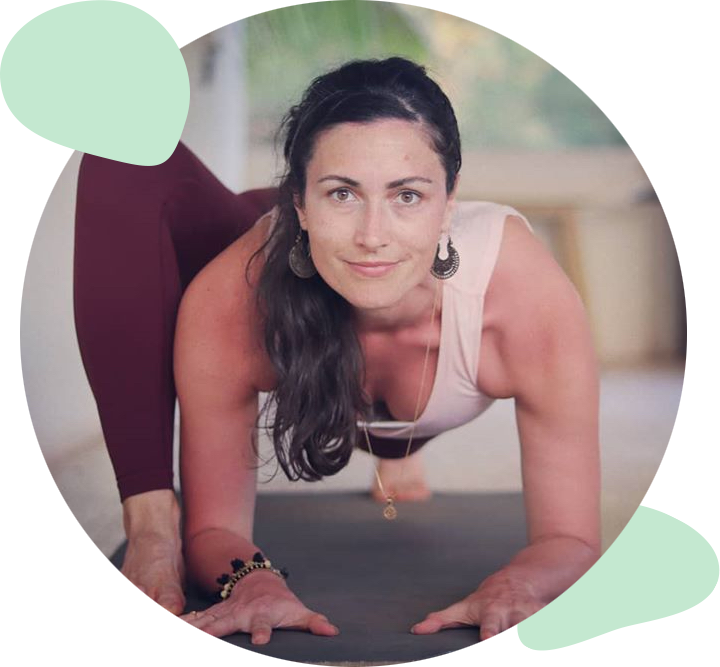Downward facing dog

Benefits of the posture
Getting upside down has some benefits for the body; it helps relieve stress and enhance the mood. It strengthen the upper back and arms and improve lymphatic and cardiovascular circulation, as well as sleep and overall mood.
Inversions are linked to muladhara chakra located in the perineum area. The associated colour is red and it’s element is earth. That’s the chakra you can work with when you need to feel grounded. It's actually funny to see that in order to feel grounded, you can play with your feet over your head!
Alignment
A lot of things happen at the same time in this posture, which can be a bit overwhelming at first. The position of the shoulders, straight arms with a slight external rotation, pelvis tilted, straight legs and heels on the floor. That’s a lot of things to focus on.
The best cue I’ve ever been told for this posture was that it’s actually a back stretch. I remember during my very first class, I thought that the aim was to get my heels on the floor. Which is not wrong in itself. But in order to get there, the key of the posture isn’t necessarily to stretch the hamstrings straight away. It's more about stretching the back, as it’s what allows the pelvis to tilt and consequently the hamstrings to stretch more deeply.
If in this posture you focus mainly on getting your heels on the floor, chances are that you’ll miss the pelvis tilt, and the upside down V shape of the posture will look more like and inverted U. It’s more important to work on stretching the shoulders and keep the legs slightly bent and the heels off the floor, rather than rounding the back and keeping straight legs. Hands are flat on the floor, shoulders width distance apart. Feet are hips width distance apart (you should be able to fit the length of a foot in between your two feet), and your gaze is towards your nostril - or between your leg. From there, the idea is to always think about pushing the floor away in order to shift your body weight towards your feet.
Modifications
Since I started teaching, I’ve noticed 2 tendencies with my students. The most frequent one is due to tightness in the shoulders area. If your shoulders are tight but you keep your legs straight, most of your weight will be in your upper body. Downward facing dog will be a very difficult posture to keep.

When I see a student making this shape, I invite them to slightly bend their knees. That way it becomes easier to equally distribute the weight, and it allows the upper body to stretch.

The other tendency I’ve noticed is basically the opposite: hyper mobility in the shoulders. I often hear students complaining that they lack flexibility; weirdly enough, being hyper mobile isn’t necessarily better! When you’re not constraint by the average range of movement, it’s hard to know where to stop. And over stretching can be bad for joints, ligaments and tendons.

If you’re hyper mobile - which is my case - keep in mind that downward facing dog requires a slight protraction of your scapula. Protraction of scapula happens when you round the upper back. Your scapula are pushed to the sides and get away from each other. If you focus on keeping this happening in your upper back, it’s gonna help you keep your shoulders in an average range of movement.

Comments
Leave a comment.Fields marked with a * are compulsory. Your email won't be published.

 By Cyro
By Cyro 